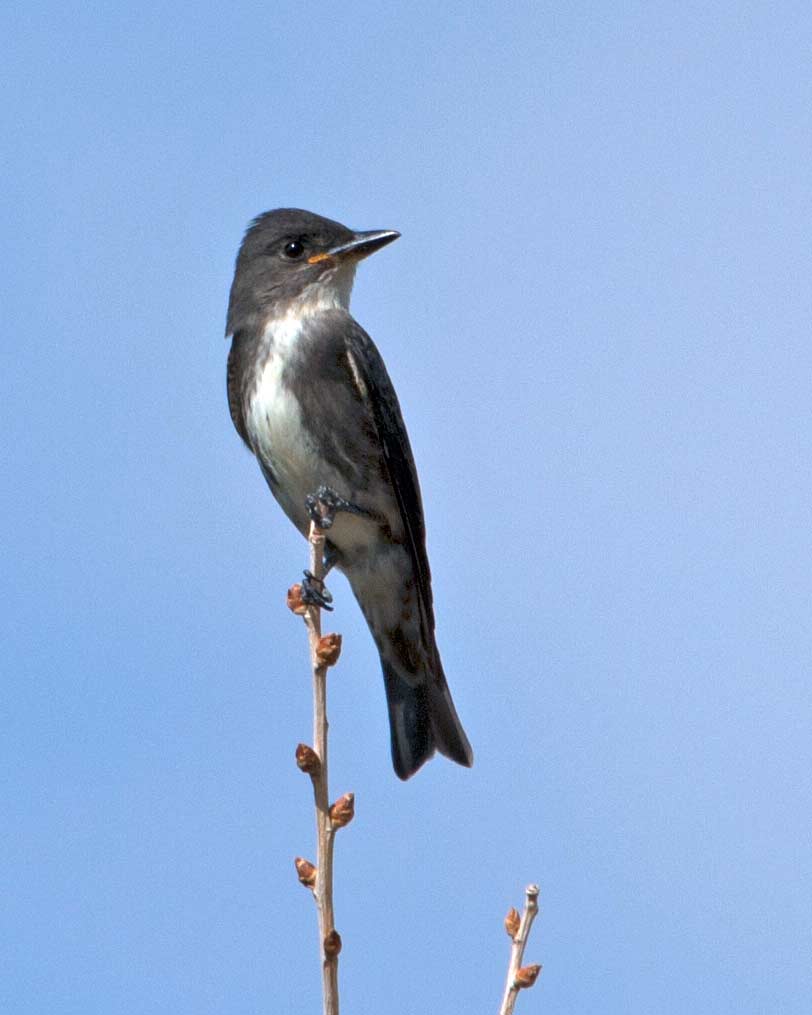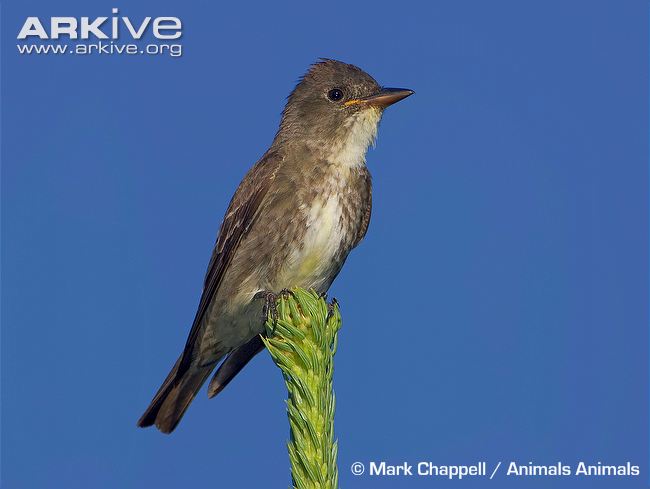
Contopus borealis
SUBFAMILY
Fluvicolinae
TAXONOMY
Contopus borealis Swainson, 1832. Monotypic.
OTHER COMMON NAMES
English: Boreal peewee; French: Moucherolle а cфtйs olive;
German: Fichtentyrann; Spanish: Pibн Boreal.
PHYSICAL CHARACTERISTICS
7.5 in (19 cm). Stout flycatcher with a large head, short neck,
and short tail. Plumage includes brownish olive upperparts,
head, crest, and wings; and dull white throat, center breast
strip, belly, and undertail coverts. Bill is large and mostly
black, with a dull orange lower mandible.
DISTRIBUTION
Breeding regions include Alaska, most of Canada, the northwest
United States, California, and the Rocky Mountains.
Winters from Southern Central American to Peru.
HABITAT
Mountainous terrain and coniferous forest. Also frequents
burns, bogs, and swamps.
BEHAVIOR
Solitary and reclusive; often perches on a high, exposed limb
or the top of a dead or living tree. Vocalization is often described
as “quick, THREE beers!” with the second note
higher. Also trebles a “pip!” Aggressively defends nesting territory
against predators and humans.
FEEDING ECOLOGY AND DIET
Often from a dead branch, hawks large insects (up to the size
of cicadas, beetles, and honeybees) in mid-flight and returns to
the same perch.
REPRODUCTIVE BIOLOGY
Breeds monogamously once per year. Female builds cupshaped
nest, usually on horizontal branches of coniferous trees.
Clutch consists of three to four eggs, incubated 14 to 17 days
by the female; young fledge at 21 to 23 days.
CONSERVATION STATUS
Not threatened, but many areas host declining populations; a
loss of wintering habitat is the suspected cause.
SIGNIFICANCE TO HUMANS
None known.
Other popular Animals
Photo Gallery of - Olive-sided flycatcher




 Animalia Life
Animalia Life